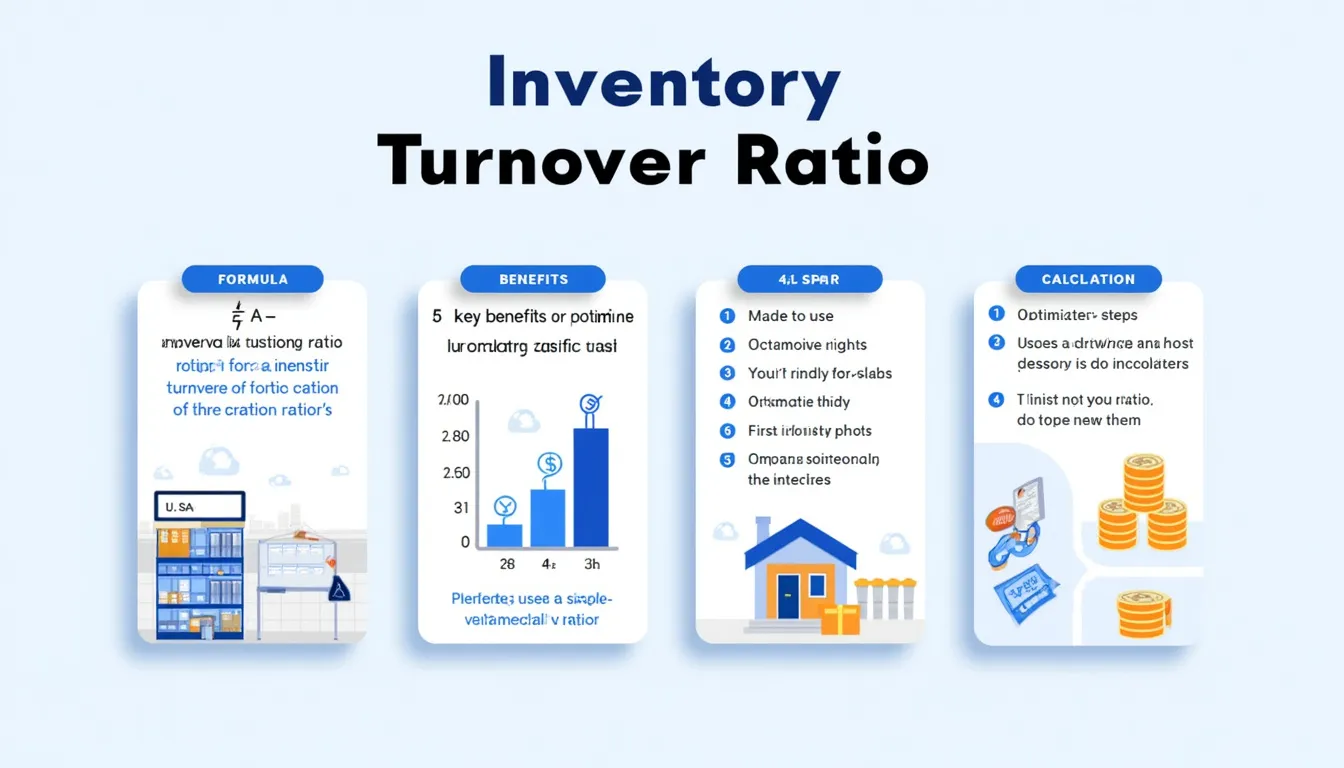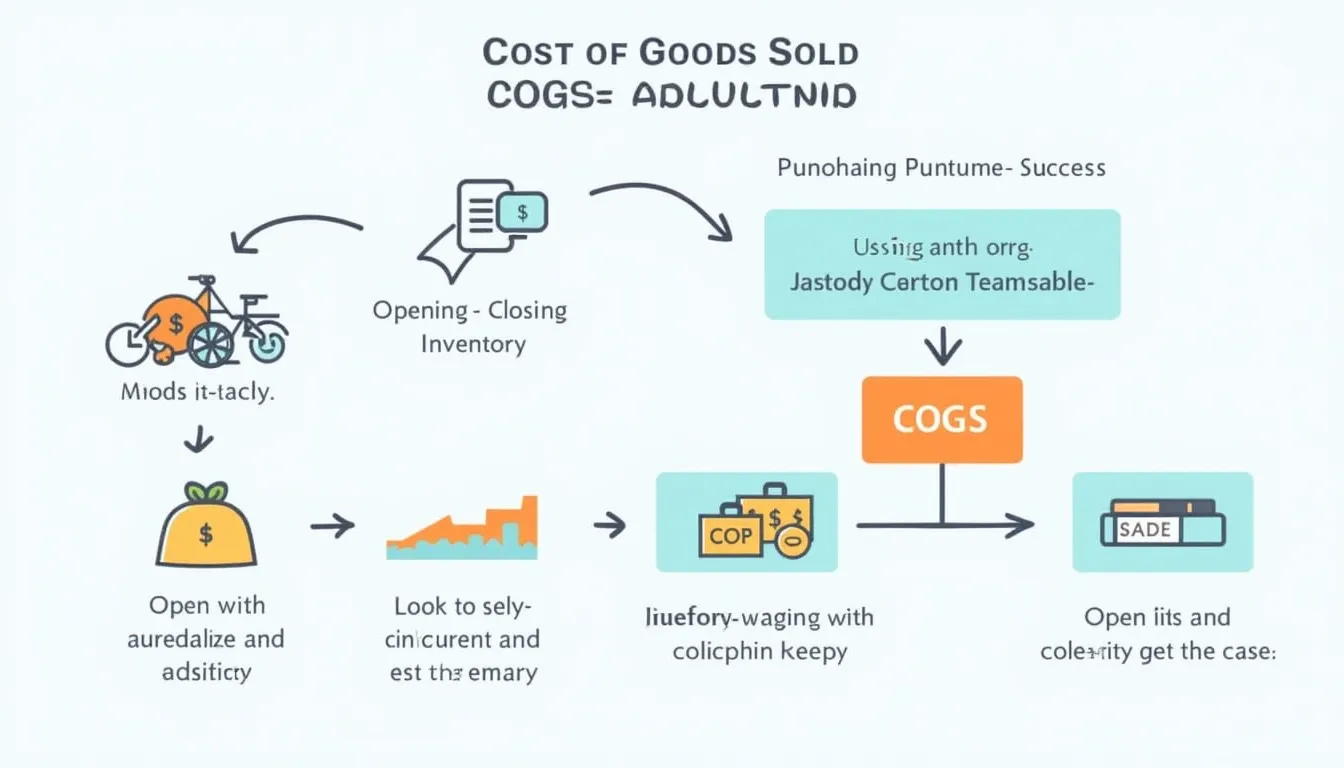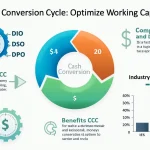Inventory Turnover Ratio Calculator
Is this tool helpful?
How to use the tool
- Enter Cost of Goods Sold (COGS): Example 1—600 000; Example 2—1 250 000.
- Enter Beginning Inventory: Example 1—120 000; Example 2—200 000.
- Enter Ending Inventory: Example 1—140 000; Example 2—260 000.
- Click “Calculate”: The ratio appears immediately.
- Read the result: A higher figure means faster stock turnover and less capital locked in inventory.
Formula
Average inventory combines period start and end values:
$$ \text{Average Inventory}= rac{\text{Beginning Inventory}+ \text{Ending Inventory}}{2} $$The turnover ratio is then:
$$ \text{Inventory Turnover Ratio}= rac{\text{COGS}}{\text{Average Inventory}} $$Example Calculations
- Example 1: Average inventory = (120 000 + 140 000)/2 = 130 000. Ratio = 600 000/130 000 = 4.62.
- Example 2: Average inventory = (200 000 + 260 000)/2 = 230 000. Ratio = 1 250 000/230 000 = 5.43.
Quick-Facts
- Typical retail turnover ranges from 2 to 8 times per year (Investopedia, 2023).
- Carrying inventory costs roughly 20-30 % of its value annually (Deloitte, 2022).
- IFRS IAS 2 states inventory must be measured at the lower of cost and net realisable value (IFRS Foundation, 2023).
- Manufacturers target at least four turns to balance production flow (APICS, 2022).
FAQ
What is the inventory turnover ratio?
Inventory turnover ratio shows how many times you sell and replace inventory during a chosen period; it links sales velocity with stock size (AccountingTools, 2023).
Why use average inventory instead of ending inventory?
Averaging smooths seasonal spikes, producing a fair year-round picture (“Inventory Turnover Ratio,” Investopedia.com).
What is a healthy turnover ratio?
Healthy values sit just above industry averages—e.g., grocery chains aim for 14+, while jewelers accept 1-2 (IBISWorld Retail Benchmarks, 2023).
How often should I calculate it?
Fast-moving sectors benefit from monthly checks; quarterly reviews suffice for durable-goods sellers (U.S. SBA Inventory Guide, 2022).
How does turnover influence cash flow?
Higher turnover shortens the cash-conversion cycle, freeing working capital for expansion (McKinsey Working-Capital Report, 2021).
Can turnover be too high?
Yes; excessive turns risk stockouts, missed sales, and expedited shipping costs (Harvard Business Review, 2020).
How can I improve a low ratio?
Adopt just-in-time ordering, pare slow SKUs, and refine demand forecasts—actions that raised turns 15 % for automakers studied by PwC (PwC Supply-Chain Survey, 2022).
Does industry type matter?
Absolutely; perishables move quickest, heavy machinery slowest. Compare your figure only to peers to set realistic goals (APICS Benchmark Report, 2022).
Important Disclaimer
The calculations, results, and content provided by our tools are not guaranteed to be accurate, complete, or reliable. Users are responsible for verifying and interpreting the results. Our content and tools may contain errors, biases, or inconsistencies. Do not enter personal data, sensitive information, or personally identifiable information in our web forms or tools. Such data entry violates our terms of service and may result in unauthorized disclosure to third parties. We reserve the right to save inputs and outputs from our tools for the purposes of error debugging, bias identification, and performance improvement. External companies providing AI models used in our tools may also save and process data in accordance with their own policies. By using our tools, you consent to this data collection and processing. We reserve the right to limit the usage of our tools based on current usability factors.







